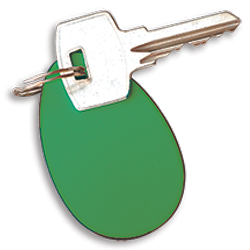|
exhibiting 101

Demystifying Drayage
Read this primer for a better understanding of drayage, as well as six ways to mitigate the wild-card nature of its impact on your program's expenses.
Any time exhibitors talk about their shrinking budgets and escalating trade show expenses, material-handling (aka drayage) costs will invariably make it into the discussion. It's inevitable because these costs are impossible to estimate when you sign up for booth space 12 months in advance. For many years, exhibitors have named material handling as the most inflated – and infuriating – nonproductive show expense. In fact, the Advocacy Committee of the Exhibit and Event Marketers Association (E2MA) cited a case study at the 2013 Red Diamond Congress on the subject. In reviewing eight major trade shows between 1996 and 2013, it found that while installation-and-dismantle labor costs increased by 21 percent, material handling increased by 257 percent.
So let's take a look at what drayage fees really cover. Just for fun, compare the cost of shipping your exhibit freight across the country to that of your material handling. You might find that your drayage fees exceed the cost of your cross-country shipment. How is this possible, you ask? There are many variables that factor into estimating drayage, from the way it's calculated to the type of freight you're shipping. So before you can learn how to save on material handling, you have to know what, exactly, you're paying for. Calculating Drayage Drayage is billed to exhibitors by the hundredweight (CWT) of freight for the round-trip services provided by the general service contractor (GST), who is the exclusive provider of material-handling services. Your carrier will weigh your shipment (subtracting the weight of the trailer with and without your freight loaded to determine the freight's net weight) and purchase a certified weight slip attesting to this official weight. To compute drayage costs this weight is always rounded up to the next hundred, so 301 pounds would be calculated as 4 CWT, although some GSC's give you a few pounds of leeway before rounding up. The rate you're charged for material handling is based on seven factors, including where the freight is being delivered (advance warehouse versus show site), whether it's delivered within the time frames specified in the exhibitor services manual, the weight noted on the certified weight slip(s) of all your inbound freight with a minimum weight per shipment (usually 2 to 3 CWT), the type of transportation carrier delivering it (common versus specialized carrier), the kind of freight being unloaded (crated, mixed, or blanket-wrap) and the percentage of each type, whether special handling applies, and if your shipment is handled on overtime. But even with those factors in mind, it's still hard to wrap our minds around the high cost of drayage. So, what other factors are at play when it comes to calculating material-handling costs? Exhibitors rarely think about the planning involved with moving thousands of pounds of freight long before the show begins. Those expenses include renting marshaling-yard space near convention halls and hotels, placing equipment such as mobile offices and portable scales in the marshaling yard, paying staff to direct the material-handling process from the marshaling yard to the docks, operating equipment such as forklifts and dollies, paying Teamster labor to check in the shipments as they arrive, processing the billing paperwork, and driving the forklifts, and supervising freight delivery. And don't forget the personnel at the GSC's service desk who'll be inputting all your drayage information to generate your final invoice and distribute the multicolored empty labels that improve end-of-show return of boxes, cases, crates, and pallets. Then there are uniform material-handling agreements to distribute as exhibitors sign off on their overall GSC invoices that allow the GSC to relinquish exhibitors' freight to the designated carriers. Clearly, there are more players and steps involved than just schlepping your freight from your truck to your booth space and back, although GSCs admit that material handling is a major moneymaker. If you don't think that list adequately justifies the material-handling rates that exhibitors are being charged, you may be right. In addition to the transparent costs listed above, some show managers request that the GSC roll other show-related costs into exhibitors' material-handling fees by using cost-shifting to create what's known as a "zero invoice" for the show manager or organizer (essentially divvying up all the infrastructural expenses of hosting an event among the exhibiting companies via revenue generated by their drayage bills). These extras can include products and services needed for the overall show, such as the production and hanging of aisle signage, aisle carpeting/tape and labor to lay it on the show floor, attendee and exhibitor registration counters and stools, decorative entrance units, informational and directional signage, and masking drape and furnishing of common areas and show offices.
COST CONTROL
Cutting CostsIt's impossible to predict drayage rates with total certainty, as there are myriad variables. But by understanding these factors, you'll be better prepared to proactively mitigate material-handling fees. 1. Where your freight is delivered. According to the 2015 Exhibition and Event Industry Labor Rates Survey, shipping to the advance warehouse costs an average of $102.88 per CWT, whereas shipping directly to the show site costs $96.96 per CWT. 2. Whether it's delivered within the required time frame. Freight delivered outside the time frame specified in the exhibitor services manual will be subject to additional fees. 3. The weight on the certified weight slip(s) of all your inbound freight. General service contractors typically charge a minimum weight per shipment (usually 2 to 3 CWT), and usually round up to the nearest CWT. 4. The type of transportation carrier. Freight arriving via common carrier is generally charged drayage rates that are 30 to 40 percent cheaper than shipments sent via specialized carriers. 5. The type of shipment being unloaded. Uncrated and/or blanket-wrapped shipments can incur 35 to 55 percent higher rates than floor-loaded freight. 6. Whether "special handling" applies. Any special handling that requires additional labor, time, or equipment will result in additional fees. 7. If your freight is handled on overtime. Overtime rates can cost as much as 50 percent more than standard rates. Now that you know what drayage fees are based on – and the factors that you can't control – here are some things you can control to proactively mitigate your material-handling costs. ➤ Material-handling package deals. Some show organizers negotiate to have the GSC create packages combining drayage and other ancillary services it provides. These packages can include no-cost freight handling of a certain number of pounds per square foot of booth space rented without additional drayage fees. Other GSCs allow drayage discounts if you are using them as your shipping carrier. But don't assume you're saving money by using the official carrier. Get a competitive bid from a similar carrier that's not sharing profits with the GSC, and add the non-discounted material-handling costs quoted in the exhibitor services manual. Also note that exhibit, furniture, and audiovisual rentals through the GSC or official contractors do not generate material-handling fees, so to make a fair comparison, you need to add drayage fees to any nonofficial vendor's quote. ➤ Lightweight exhibitry. Examine your exhibit and past drayage bills. Is your exhibit heavy and bulky to ship and move to the show floor? If so, the next time you build a display, make one of the criteria in your request for proposal (RFP) the use of lighter materials for both the exhibit and crating (ask for plastic crates instead of wood ones to avoid adding unnecessary weight). ➤ Minimal collateral literature and promotional items. What percentage of the promotional materials and giveaways that you ship to a show actually get distributed? Also, consider that an estimated 80 percent of collateral on the show floor never gets back to the attendees' offices but instead ends up in the trash. To cut costs, you can print inexpensive business cards, include a URL that takes visitors to a site with information about the products you're featuring at the show, add a toll-free phone number, and list your key messages on the back of the card. ➤ Type of carrier. Material-handling costs are based on how trucks are loaded and the labor and equipment it takes to unload and reload them. If you ship via a common carrier that floor loads your crated or palletized freight (rather than stacking it vertically), you'll get the best drayage rate since it's quick and easy to move with a forklift. Every other type of carrier that stacks freight, handles blanket wrap, mixes small loads of freight, or has small packages is considered a specialty carrier, and you will be charged a higher drayage rate (usually 30 to 40 percent) for these shipments due to the additional required labor, time, and equipment. Even though there is a difference in material-handling cost depending on the type of carrier you choose, your selection should be based on the level of service you require. Work closely with your shipper to make sure your driver is informed of your assigned check-in time at the marshaling yard and targeted unloading date so he or she can help you avoid missed-target penalties and overtime unloading and reloading charges. ➤ Consolidation. One of the biggest budget breakers is shipping small packages through the show docks, as the GSC may weigh them at its minimum of 200 to 300 pounds.For example, if you use a small package carrier such as UPS or FedEx, be aware that these shipments do not provide a separate bill of lading required for drayage processing. The result? This freight's delivery to your booth space will be delayed until the proper paperwork can be generated on the dock. Also, multiple-piece shipments (those just marked "1 of 2" and "2 of 2" that aren't bound together) might not be processed on the dock at the same time, causing you to pay multiple material-handling minimums that increase your drayage bill. If possible, either band together like-sized cartons or pack smaller boxes in one large carton to avoid incurring multiple minimum weight charges, or ship small packages to your hotel and schlep them to the venue yourself. ➤ Paperwork audits. It's imperative to audit your material-handling invoice for charges you don't understand or recognize. Review every line item of your GSC's invoice as soon as you receive it on show site. Through the years, I've been charged all kinds of bogus fees – and probably a few that could just be chalked up to human error. I was once charged marshaling-yard fees for freight that was delivered by a small package carrier (like UPS or FedEx) that had its own dock for deliveries and didn't even go to the marshaling yard. And I've been charged for unloading freight that belonged to an exhibitor with a similar company name to ours. In most cases, a discussion with service-desk personnel while I was still on site made the difference in the removal of these erroneous charges. Once everyone leaves the show city, it's very difficult, if not impossible, to correct these errors.In addition to the aforementioned considerations, communicate your displeasure with the costs of drayage to show management. As exhibitors, we need show management's help in holding the line on these fees. E  Candy Adams
Candy AdamsCTSM, CEM, CMP, CMM "The Booth Mom," is an independent exhibit project manager, trainer, speaker, consultant, and an Exhibitor Conference faculty member. CandyAdams@BoothMom.com
|
|
|
||||||||||||||||||||||||||||
|
|
||||||||||||||||||||||||||||
|
TOPICS Measurement & Budgeting Planning & Execution Marketing & Promotion Events & Venues Personal & Career Exhibits & Experiences International Exhibiting Resources for Rookies Research & Resources |
MAGAZINE Subscribe Today! Renew Subscription Update Address Digital Downloads Newsletters Advertise |
FIND-IT Exhibit & Display Producers Products & Services Supplier to Supplier All Companies Compare Get Listed |
EXHIBITORLIVE Sessions Certification Exhibit Hall Exhibit at the Show Registration |
ETRAK Sessions Certification F.A.Q. Registration |
EDUCATION WEEK Overview Sessions Hotel Registration |
CERTIFICATION The Program Steps to Certification Faculty and Staff Enroll in CTSM Submit Quiz Answers My CTSM |
AWARDS Sizzle Awards Exhibit Design Awards Portable/Modular Awards Corporate Event Awards Centers of Excellence |
NEWS Associations/Press Awards Company News International New Products People Shows & Events Venues & Destinations EXHIBITOR News |
||||||||||||||||||||
|
||||||||||||||||||||||||||||






